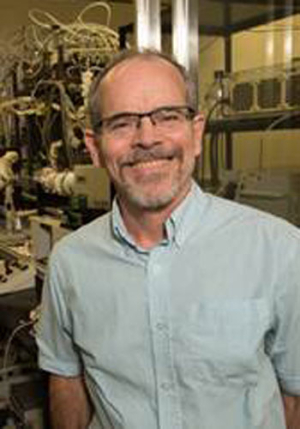Potential for more efficient, cheaper aftertreatment system being studied with $3.2 million DOE grant
It is no wonder Houston ranks high on the list of the nation’s most polluted cities each year. Our cars are belching pollutants responsible for everything from acid rain to climate change.
Even the newer, eco-friendly cars with lean-burn and diesel engines praised for higher fuel efficiency and their ability to emit fewer unburned hydrocarbons and carbon dioxides don’t pass the test.
Why? Their exhaust systems are equipped with a component unable to filter out one smog-causing toxin—nitrogen oxides or NOx, the respiratory irritant in smog.
A study led by researchers at University of Houston Cullen College of Engineering is centered on cleaning up our air by replacing this component with a piece of technology that could get rid of more than 80 percent of the NOx that’s now being released from these engines’ exhaust.
“We are doing research that looks at the development of an advanced catalytic converter for lean-burn or diesel vehicles to help remove NOx from their exhaust,” said Michael Harold, a professor in the college’s department of chemical and biomolecular engineering and lead investigator on the study. “This will help meet new U.S. Environmental Protection Agency emission standards that require a dramatic decrease in the discharge of particulate matter and NOx from diesel vehicles by 2010.”
Harold is working with Dan Luss and Vemuri Balakotaiah, both professors in the same department, on the project that is expected to reduce exhaust pollutants being released to near zero.
UH, lead on the three-year, roughly $3.2 million cost-shared grant from the U.S. Department of Energy, has teamed with researchers from the University of Kentucky as well as individuals from Oak Ridge National Laboratory, Ford Motor Company and the chemical company BASF to further study the feasibility of this technology.
Last month, DOE named UH one of six universities to be awarded a portion of close to $13 million as part of its Vehicle Technologies Program. The program supports research focused on developing more energy efficient, environmentally friendly technologies that reduce America’s dependence on petroleum.
Lean-burn engines, for which the group is developing the exhaust technology, are leading this goal right now mainly due to their ability to increase fuel efficiency and reduce several harmful emissions from exhaust. This is possible because they use more air and less fuel during combustion—the chemical process that generates energy from the reaction between the fuel and air mixture. It is the same process that causes oxygen and nitrogen in the air to react together, forming NOx.
But removing this NOx is difficult. It is a pollutant existing catalytic converters—a part of the exhaust system responsible for reducing toxins from emissions—have trouble filtering out.
“The oxygen that is not consumed during combustion makes it more difficult to eliminate the exhaust NOx,” Harold said. “Simply put, the catalytic converter technology on gasoline-powered vehicles is not effective, so an advanced version must be developed.”
Researchers are targeting this shortfall by coupling a Selective Catalytic Reduction (SCR) system and Lean NOx Trap (LNT) that takes on the reduction of this toxin in two phases. As NOx travels through the exhaust system, the trap stores NOx and later converts it to ammonia. The ammonia is stored by the SCR catalyst and used to convert remaining NOx that slips past the trap to nitrogen gas—a naturally occurring substance in the air we breathe.
The team will further optimize the system by researching ways to use fewer precious metals, such as platinum and rhodium, which help convert NOx to ammonia in the system’s trap.
“Platinum is more expensive than gold per gram,” said Balakataiah. “Seventy-percent of what is used of this precious metal goes into automobile after-treatment systems. With more than 600 million cars in the world, at one gram a piece, that’s expensive.”
If possible, the use of fewer precious metals could make the system less costly than the conventional catalytic converters it would replace.
While much of their three-year, DOE supported study will focus on this ammonia based system, researchers will also explore this system’s potential as a non-ammonia based mechanism, which some initial testing by Ford suggests may be viable.
